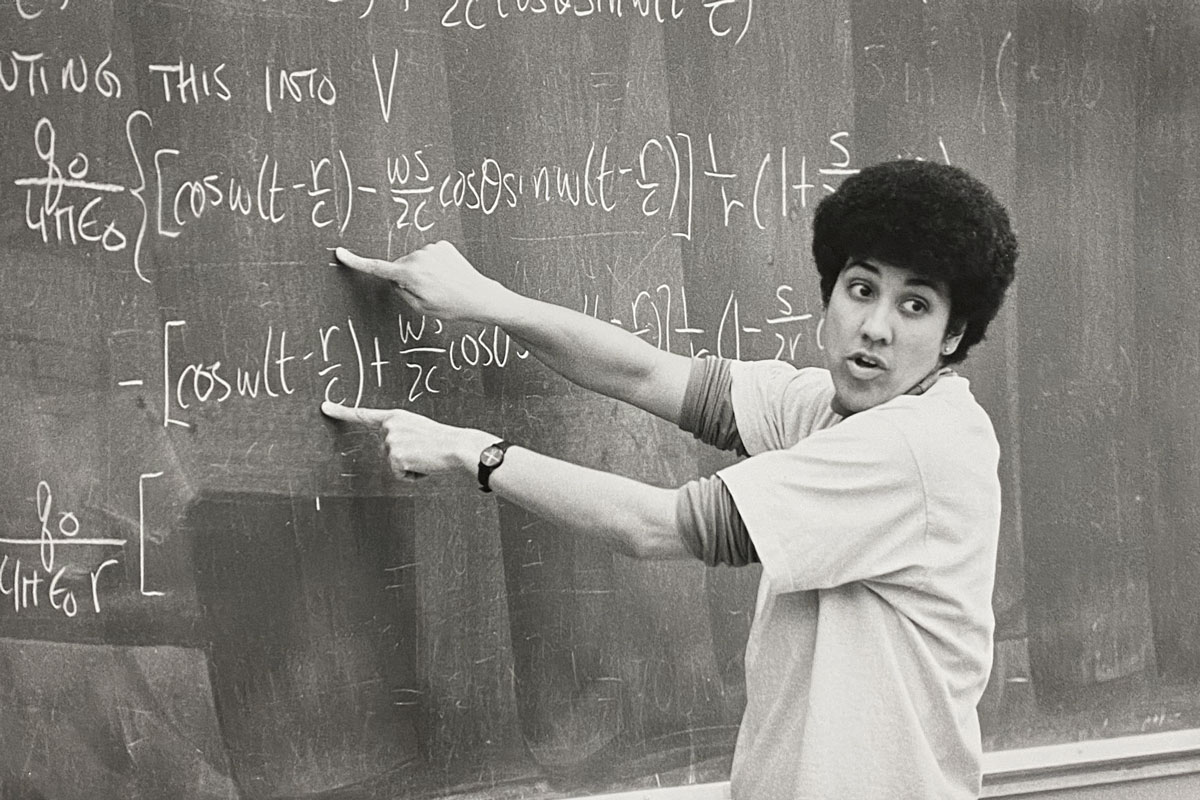The Long Arc
Prof. Mary James has been working to reshape Reed’s trajectory on race for three decades.
When Prof. Mary James [physics] arrived on campus in 1988, she joined a faculty that was almost 100 professors strong.
She was the only one of them who was Black.
The whiteness of campus was hardly a coincidence. In 1964, Reed won a grant from the Rockefeller Foundation to recruit outstanding Black high school students. Ultimately some 92 Black students came to Reed through the grant. Many of these students objected to a curriculum that systematically excluded Africa and African Americans. They staged sit-ins and rallies for a Black studies program, a cause that rived the campus in two. The faculty narrowly approved the program in 1969, but as the Rockefeller grant dwindled, so did the number of Black students; without them, the program became an easy target for budget cutters. After a few years, the program was eviscerated; all that remained was bitterness and resentment among the faculty, ill will that still echoed when Prof. James arrived. “There was some bad history between these factions,” she remembers.
Prof. James had cause for hope in 1992, when the trustees brought in a new president to heal some of the divisions within the faculty. This was Steven Koblik [1992–2001], who set up one-on-one meetings with every professor on campus to learn more about their hopes and fears. In her meeting with Koblik, Prof. James broached the topic of race.
“I talked about my physics research, and said we should seriously diversify—and he told me: Not on my plate, not gonna happen,” she remembers.
She refused to give up. The arc of her progression from sole Black faculty member to dean for institutional diversity looked long indeed in those early years, but she was determined to make it bend.
Year by year, she saw movement. In 1988, prominent Black lawyer Linda Howard ’70 joined the board of trustees and pushed for campus diversity to be an institutional goal. In 1995, Prof. Pancho Savery [English 1995–] joined the English department and became the first Black tenure-track faculty member to teach Hum 110.
The reinforcements kept coming. The arrival of Prof. Crystal Williams [English 2000–13], Prof. Paul Silverstein [anthropology 2000–], and Prof. Nigel Nicholson [classics 1995–] provided fertile ground to bid for action on diversity.
In 2004, James and her allies put a resolution on the faculty floor for the upcoming campaign, circumventing the zero-sum mindset of curricular changes on a finite budget. “If you say, ‘We wanna do this new thing,’ taking away this old thing is hard, as opposed to, ‘We’re gonna be raising new funds, and we want diversity to be part of the expansion.’”
The politics of the resolution were fraught. Prof. James recalls that the normal process of a raised-hand vote in the faculty meeting was tabled in favor of a mail-in vote. “People did not want their votes to be visible to the entire faculty,” she says. Ultimately the resolution passed by a wide margin, triggering the formation of the inaugural Committee on Diversity.
Another key moment arrived in 2011, when President Colin Diver appointed Prof. Williams as the first dean for Institutional Diversity. Prof. James took over in 2014.
“I didn’t want to repeat the missteps of the ’60s and ’70s. Anything we were going to do needed to be integrated fully into our existing structures,” she says. “Enhancing the curriculum was going to be structural. In many disciplines the emerging subfields concern the study of texts, creative products, and lived experiences of marginalized peoples around the world. As you have retirements, how can you reenvision the department curriculum and needed expertise to capture this knowledge?”
In the history department, for instance, the retirement of an expert on the British Empire prompted a search for a historian focused on the perspective of the colonized instead of the colonizers. An upcoming opening in the department targets experts in Africa, the Middle East, and perhaps Southeast Asia.
Performing arts curricula now fully integrate the contributions and expertise of artists across race, sexual orientation, and gender expression. “Those curricula look entirely different than they did 30 years ago,” she says, “and the faculty members have almost completely turned over in that time.”
Some changes are more subtle. Imagine walking into your intro chemistry class as an eager new Reedie. As other students file into a packed Vollum lecture hall, the projector displays a picture of a Nobel laureate or other substantial contributor to the field. Today, like every day of the past semester, that featured innovator is a woman or a person of color. These images tell a powerful story about who can be a chemist without anyone having to say a word.
“One of the big changes is that we’re centering the student experience much more, and the experiences of students from historically marginalized groups in particular,” she says. “You can’t argue with someone about how they feel. I emphasize over and over that the ways in which students experience their environment is the data. How we think they ought to experience their environment, that is not the data.”
Prof. James’s structural approach means that all curricular enhancements have broad support across many stakeholders. For instance, the new comparative race and ethnicity studies program, like most interdisciplinary programs, involves tenure-track faculty members across several departments. These departments all have a stake in the program.
Prof. James is optimistic about Reed’s current and future efforts to become a more inclusive, equitable, and anti-racist institution. “The president is very committed, as are the vice presidents and deans, to being part of the national conversation and calls to action regarding effective and lasting change.”
Tags: Diversity/Equity/Inclusion, Editor's Picks, Institutional, Professors, Reed History
